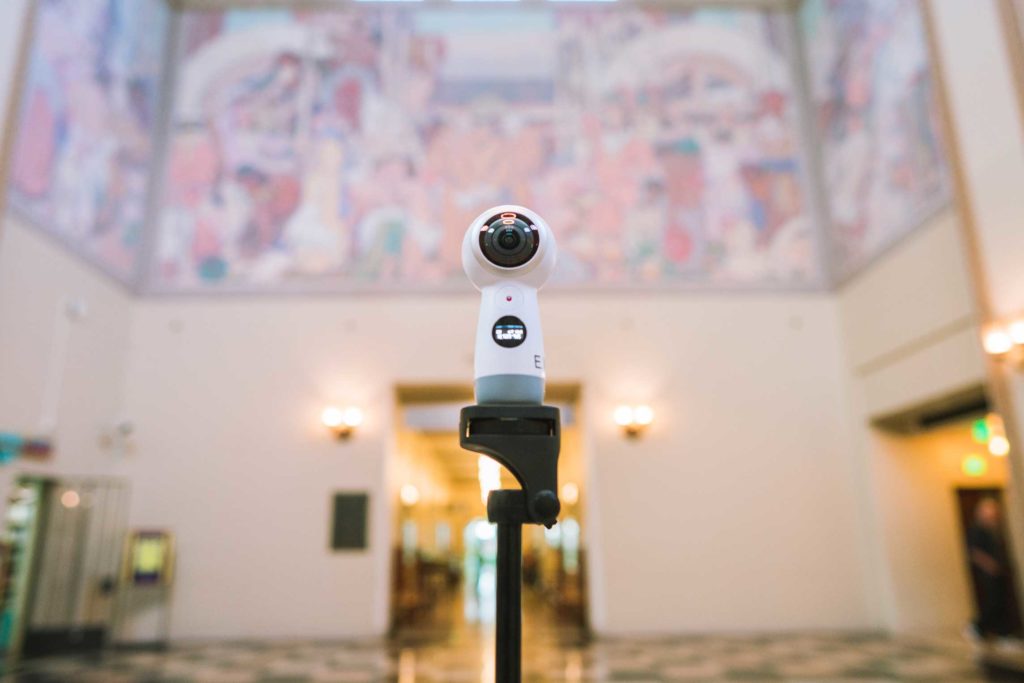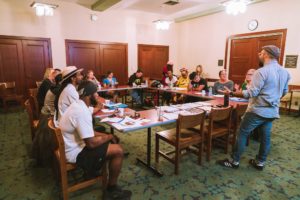 Every semester the JOVRANLISM hackathon-style course based at USC Annenberg creates an environment that brings emerging technologies, non-fiction stories and industry partners. And leading the semester-long project are students from different backgrounds collaborating to innovative journalism.
Every semester the JOVRANLISM hackathon-style course based at USC Annenberg creates an environment that brings emerging technologies, non-fiction stories and industry partners. And leading the semester-long project are students from different backgrounds collaborating to innovative journalism.
“Learning to do journalism in this way was totally new to me, both in format and the style. Because 360 video is immersive, the subjects played a huge role in creating the final stories,” said Claire Heddles reflecting back on the immersive storytelling project she and her classmates produced, Homeless Realities.
From creating 3D models of homeless community’s dwellings using photogrammetry, to inserting these models into Snap Inc.’s Lens Studio and Magic Leap for AR experiences, JOVRNALISM students pushed the boundaries of emerging technologies that can be best used to tell immersive stories. The students also created a hologram of an Angeleno that experienced unstable housing.
Learning curve of the emerging technologies, however, was only part of the challenge students overcame and felt proud of, this semester.
“Homelessness, gave me a chance to experience a side of Los Angeles and the breadth of human experience within the city that I’d only barely glimpsed before,” said Rachel Parsons, who is earning her bachelor’s in journalism. “The scope of reporting – profiling people who have suffered homelessness throughout their lives – humbled and frequently floored me. It was a privilege to be let into our subjects’ lives and experiences.
The students worked tirelessly to not only report on the realities of unstable housing community in Greater Los Angeles, they empowered these individuals to immerse audiences in their own Homeless Realities.

Robert Hernandez, along with a group of housing unstable participants and his JOVRNALISM students at the Los Angeles Public LIbrary teaching them the skills needed to tell their stories using 360-degree cameras. Photo by: Richard Tamayo
Eleven participants – community members selected by diverse non-profits focsued at assisting the homeless and housing unstable community – learned how to shoot footage using 360-video cameras and what makes effective immersive stories.
At the end of the workshop, the participants were gift 360-camera kits to own and were offered to collaborate with the students to produce their own immersive stories.
Homeless Realities, a result of this collaboration, is a series of immersive stories by this frequently marginalized and silenced community who have experienced unstable housing due to circumstances ranging from domestic violence to mental illness.
A selection on of these stories were published by Al Jazeera’s Contrast VR, as part of their My People, Our Stories series.
All stories from the training, plus additional projects about homelessness, we also published via the JOVRNALISM apps and via Snapchat, distributing the AR experiences.
